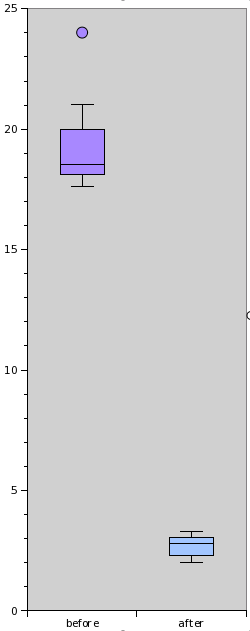November 7 2010 — man, do we suck at this
60 years ago today during a particularly brisk gale, the Tacoma Narrows Bridge collapsed, thereby winning everlasting recognition in the pages of engineering history.
A newspaper editor, Leonard Coatsworth, was the last person to drive on the bridge. He describes it like this:
Just as I drove past the towers, the bridge began to sway violently from side to side. Before I realized it, the tilt became so violent that I lost control of the car...I jammed on the brakes and got out, only to be thrown onto my face against the curb...Around me I could hear concrete cracking...The car itself began to slide from side to side of the roadway.
On hands and knees most of the time, I crawled 500 yards (460 m) or more to the towers...My breath was coming in gasps; my knees were raw and bleeding, my hands bruised and swollen from gripping the concrete curb...Toward the last, I risked rising to my feet and running a few yards at a time...Safely back at the toll plaza, I saw the bridge in its final collapse and saw my car plunge into the Narrows.
There was one casualty.
And now, if you've never seen concrete wobble before, I'd like you to watch an eerie Youtube clip of the collapse, in recognition of all we've learned about suspension bridges since 1940, and in memory of Tubby the dog.
❦
Those who tuned in yesterday might recall that I had realized that Str.trans was really, really slow, and that I theorized that it could easily be sped up a bit. Today I put my tuits where my mouth is, and rewrote the Str.trans method to see if it would get any faster.
 While preparing the patch, I collected some speed statistics. Using yesterday's blog post (~5kB) as input, and the same arguments as in the
While preparing the patch, I collected some speed statistics. Using yesterday's blog post (~5kB) as input, and the same arguments as in the .trans call in html_escape, I called Str.trans 10 times and had a script register the time each invocation took. I did this before and after applying the patch.
My patch makes Str.trans about 500% faster than the old version.
As discussed on IRC, the timings of the old algorithm actually get worse over time. This is probably due to a buildup of objects; the old algorithm creates a lot of small strings, which it then joins together. They should be GC'd, but maybe they're not for some reason. The little pink ball at the top is an outlier, a run that was hit particularly hard for some reason, and took 24 seconds. (24 seconds! For 5 kilobytes of text! On a modern computer!)
I wrote yesterday "Now I understand a little better why it is so slow." What I was referring to was that the old algorithm basically works its way forward character by character. Its run time grows proportionally with the length of the string. Maybe that explains why I was the first one to suffer from its abysmal performance: I might be the first one to put longish strings into Str.trans.
What my algorithm does is keep a hash with the next index of each substring to be substituted, and then pick the smallest one through each iteration. (Or, more informally, "skip the boring parts".) This makes the number of iterations through the main loop proportional to the number of substitutions actually made.
Oh, and my code is shorter, too.
Rakudo is often claimed to be slow, and with good reason. However, I hadn't previously suspected that some of the slowness was due to suboptimal algorithms. Now I feel almost morally compelled to read the src/core directory in search for similar spots where we can make quick speed gains just by doing things in a slightly more clever way.
By the way: since Rakudo takes a while to build, I decided to monkey-patch in my version of Str.trans rather than change it in-place and then rebuilding Rakudo each time. This sped me up significantly; all I needed to recompile each time was my small script with an augment class Str in it. I also threw in the relevant spectests, so that they ran after my benchmarking. Nice way to work; gotta remember that.
Oh, and I've put back my html-escape sub into psyde, now that it's not ridiculously slow anymore. So if you're reading this post through RSS, the &'s <'s and >'s in this post have been escaped (efficiently!) with Perl 6.